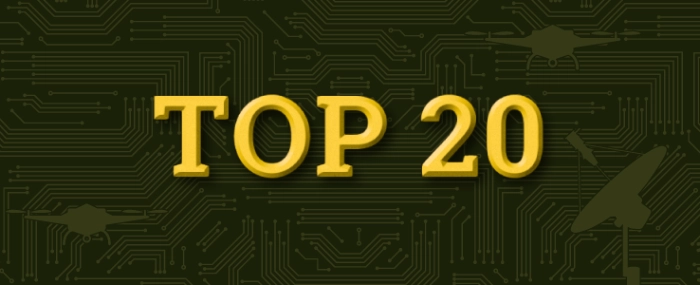
Europe’s top 20 defence companies: Who leads the arms race?
The global defence industry never sleeps. Geopolitical tensions – from Russia’s invasion of Ukraine and conflict in the Middle East to the arms build-up in East Asia – are fuelling record-breaking investments in military technology and production.
According to SIPRI’s latest report, the combined revenues of the world’s 100 largest arms-producing companies rose by 4.2% in 2023, reaching USD 632 billion. In this landscape, Europe remains a significant – albeit cautious – player, generating USD 133 billion in arms revenues with a modest growth rate of just 0.2%.
US firms still rule the global market
SIPRI data confirms that US-based companies continue to dominate the global arms industry. In 2023, 41 US companies appeared on the Top 100 list, collectively earning nearly USD 317 billion – about half of the global total.
Of those 41, 30 companies increased their arms revenues. Since 2018, the top five companies in the Top 100 have all been based in the United States. In 2023, the top five were Lockheed Martin, RTX (formerly Raytheon), Northrop Grumman, Boeing, and General Dynamics.
Asia and Oceania accounted for 23 companies, with combined YoY growth of 5.7% and revenues reaching USD 136 billion. Six firms were based in the Middle East, with combined revenues rising 18% to USD 19.6 billion. With the start of the war in Gaza, the arms revenues of Israel's three companies on the Top 100 list reached USD 13.6 billion. This was the highest figure ever recorded for Israeli companies in the SIPRI Top 100.
Russia, meanwhile, had only two firms on the list, but they reported a combined 40% revenue increase – largely driven by state-owned conglomerate Rostec, which alone saw a 49% jump in arms sales.
Europe’s arms industry edges forward
European firms posted the smallest revenue growth of any region – just 0.2% YoY. This may come as a surprise given the war in Ukraine and widespread increases in defence budgets. However, SIPRI states that the data reflects a time lag – many of Europe’s top firms were still fulfilling older contracts in 2023, with new orders yet to be reflected in annual revenues.
A total of 27 European companies made SIPRI’s Top 100 list in 2023. The table below highlights the 20 largest among them.
| European rank | Top 100 rank | Company | Country of origin |
| 1 | 6 | BAE Systems | United Kingdom |
| 2 | 12 | Airbus | Trans-European |
| 3 | 13 | Leonardo | Italy |
| 4 | 16 | Thales | France |
| 5 | 22 | Rolls-Royce | United Kingdom |
| 6 | 26 | Rheinmetall | Germany |
| 7 | 30 | MBDA | Trans-European |
| 8 | 32 | Naval Group | France |
| 9 | 33 | Safran | France |
| 10 | 35 | Saab | Sweden |
| 11 | 38 | Babcock International Group | United Kingdom |
| 12 | 45 | KNDS | Trans-European |
| 13 | 46 | Dassault Aviation Group | France |
| 14 | 50 | CEA | France |
| 15 | 51 | Fincantieri | Italy |
| 16 | 57 | Serco Group | United Kingdom |
| 17 | 59 | Atomic Weapons Establishment | United Kingdom |
| 18 | 60 | JSC Ukrainian Defense Industry | Ukraine |
| 19 | 64 | PGZ | Poland |
| 20 | 66 | Thyssengroup | Germany |
Evertiq presented the ranking of Europe's largest arms producers on stage during Evertiq Expo Cracow on May 28 – offering a snapshot of the the defence industry. Evertiq Expo will return to Cracow again next year, make sure to don’t miss out.
What does “arms revenue” mean?
SIPRI ranks companies by how much revenue they generate from military sales – not total the company's revenue.
Arms revenue includes: Sales of weapons, systems, and technologies developed specifically for military use. Military-specific services such as IT, maintenance, repair, overhaul, and operational support. Sales both to the domestic military and for export. Arms revenue excludes: Civilian goods like fuel, office equipment, general IT, uniforms, or boots

